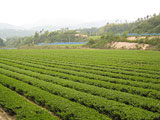The consistent concept underlying all of our products is “Made in Japan.”


Japanese Rice Crackers
Ever since ancient times when Japan was called the “Land of Vigorous Rice Plants”, rice crackers, also well-known as “Arare” or “Okaki,” have enjoyed popularity both as daily commodities and in the form of preserved foods. Japan is renowned as a country in which delicious rice of the highest quality is harvested, rice that been grown on the basis of centuries of experience and creativity. It is thus natural that these traditional and unique rice crackers have evolved in this fashion.
“Arare” are said to trace their origins back to times when farmers consumed them as snacks between meals. “Arare” are flavored in a simple fashion with condiments such as soy sauce or salt, and they have enjoyed wide popularity literally for ages. “Okaki” are said to have their origins in Kagamimochi, round rice cakes that in Japan are offered to the gods every New Year. Rice cakes of this type were cut up and then baked, and “Okaki” thus came into existence. Arare and Okaki are both made principally from glutinous rice, while in contrast a well-known item derived from non-glutinous rice is called “Senbei,” or thin rice crackers.
Matsumoto’s original brand “TOBEKA” is a brand by means of which Japanese-made finest quality rice crackers are supplied to the world. In the markets of the Middle East, over a period of many years “TOBEKA” has been widely recognized as a brand that is representative of Japanese rice crackers and that is regarded with affection by many customers.



Matsumoto's fifth year tea plantation since planting in Kyoto Prefecture.
Japanese Green Teas
Uji, Shizuoka, and Sayama are the three leading brands of tea in Japan. In general terms, tea leaves are heated by roasting, oxidization and fermentation are terminated and the teas are then produced by means of kneading and drying the leaves. In contrast to black tea and oolong tea which are both fermented teas, Japanese green teas belong to a group of unfermented teas. Thus, by global standards the processing of Japanese green teas is recognized as being in a category that is unique.
Japanese green teas are rich in theanine, a flavor-enhancing ingredient which is important in terms of providing a “fine taste.” Another major ingredient of Japanese teas is “catechin” which is a kind of polyphenol and has an astringent taste. The resultant ‘deep’ taste, which is based on an appropriate balance of flavor and astringency, is one of the characteristics that differentiate Japanese green teas from oolong and black teas.
A wide variety of Japanese green teas exists, including Macha (rubbed tea), Sencha (broiled tea), Gyokuro (Jade Dew), Bancha (common tea), Hojicha (pan fried tea), and Genmaicha (brown-rice tea). These various types of tea form an indispensable part of the daily lives of the Japanese people. At the same time, these teas also constitute a symbol of solemnity in the Japanese “Way of Tea” in which manners play a vital role, as can often be witnessed in Japanese “tea ceremonies.” Importance was at one time also attached to the medicinal properties of Japanese green teas, and Japanese green teas are still regarded as healthy drinks that symbolize Japanese culture. Japanese green teas at present enjoy a high reputation in every part of the world and are appreciated by vast numbers of people.

Dried Noodles
Japan’s dried noodles include “Udon,” “Soba,” and “Somen”. All of them are dried products but with the use of boiling water they can be restored to their original form as “noodles” that are easy to chew. These products can also be preserved effectively for considerable periods and, as next to rice these noodles are the most popular foods in Japan, they are regarded as indispensable for daily living.
A wide variety of original “noodles” exists in various parts of Japan, and each one of them reflects the characteristics of local climates and cultures. The numbers of varieties of noodles are extensive, and this fact is indicative of the extent to which “noodles” are loved by the Japanese people.
Japanese-made dried noodles are comparable to handmade raw noodles in terms of quality, and many of them even have a better flavor than raw noodles and are also easier to chew. A wide variety of very interesting toppings are added to “noodles.” Among them, eggs and slices of deep-fried bean curd are known to go well with many kinds of noodles, and Japanese people also enjoy noodles with seasonal foodstuffs, such as tempura, shiitake mushrooms, meat, and edible wild plants, as well as with the local specialties of various regions.
Noodles perform perfectly roles that are expected of them as foods that are appropriate for each season of the year, and they are also regarded as cuisines that are truly representative of Japan.










